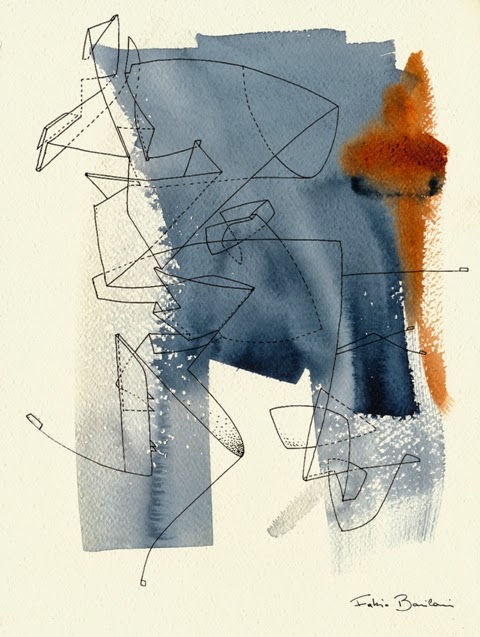 |
| DWG251014 |
DWG # 0021
DWG # 0013
 |
| DWG260914 |
“…we think that the drawing in architecture, that is, the
unconscious act, which calls logic into question, could be the “blind spot”.
The coincidence that is not a coincidence, leads us to a method of design in
which the drawing becomes important. Free from physical constrains, without thinking
about spatial consequences, the drawing comes into being an instant, and
“administrates” the building. And when you see the drawing, created in an
explosive moment, you see the superimposition of plan, elevation and section. Everything
is in drawing.”
Wolf Prix, LectureDresden, 1995
DWG # 0010
 |
| DWG240914 |
"If “action painting” is produced by the dynamics of
dripping, smearing, and sweeping brushstrokes of paint to reveal the complex
character of abstract art, then “action drawing” would be something like
juxtaposing lines, planes, volumes, typographical elements, photographs, and
paper cutouts on a drawing that aims to uncover the intricate universe of
architectural ideas"
WAI - Drawing
Architecture / A conversation with Perry Kulper
DWG # 0007
 |
| DWG270914 |
"By 1979, I was making these drawings every morning. As a method of catching intuition and first thoughts it is a technique which sets the imagination free.
In the meditation associated with the initial conception
of a building, its first stirring towards form, space and light, the
watercolors played a crucial role: they gave intuition a primary position.
(...) Chance operations opened many paths for the composer
John Cage, my next door neighbor who lived on 6th Av in NY. Cage used chance
protocols to escape the tyranny of the ego. He recommended unintentional acts
as key aspects of his method"
Steven Holl - Written in Water
Iscriviti a:
Post (Atom)













